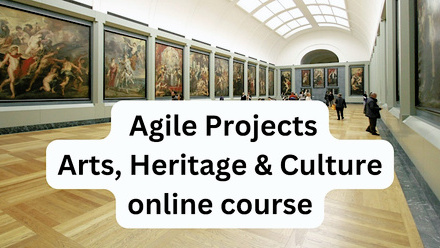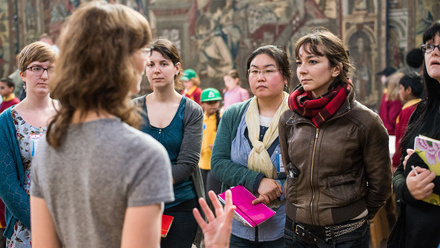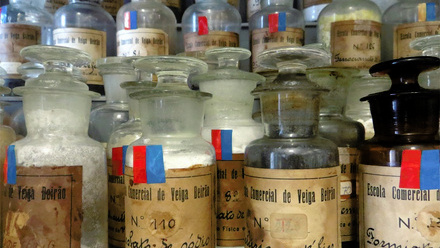Book now for the third BPG Graduate Symposium!
The symposium showcases book and paper themed dissertation research topics of current students and recent graduates from around the world. The evening is made up of five speakers presenting their research in short presentations of around 10 minutes in length, followed up with group Q&As from the audience.
We are delighted to announce our five speakers for the January symposium:
Emma Guerard (she/her)
SUNY Buffalo State College
Close Encounters of the Archival Kind: Considerations for Treatment of a UFO Scrapbook
The University of Iowa Libraries’ Special Collections include the Science Fiction and Popular Culture Collections. These collections bring together materials related to the creators of popular genre fiction and the communities of fans and enthusiasts that grow from their special interests. A scrapbook of magazine and newspaper stories related to sightings of unidentified flying objects (UFOs), or “flying saucers,” was donated to the library. Consisting of clippings from popular magazines like “Life” and “Look” dated from 1947 to 1956, the scrapbook reflects mainstream American reactions to the UFO phenomenon. As part of the final internship year, these fragile ephemeral materials were selected for treatment to stabilize the scrapbook for digitization, classroom use, and access to researchers. The treatment eventually presented an opportunity to redesign the treatment plan to account for the ecological impact of materials used.
Treatment focused on stabilizing clippings adhered with pressure sensitive adhesive tape to the album pages. Staining on the album pages was deemed appropriate as an indicator of the original process of making the scrapbook, but staining on the clipping made printed magazine pages translucent and difficult to read. After initial tests with solvent reduction of the stains, it was apparent that the volume of solvent needed for the full treatment could have a negative environmental impact in the immediate area. Rather than seeking an alternate solvent for stain reduction, the treatment plant was revised to prioritize mechanical stability of the object and reversibility of the treatment to allow for a future, greener approach to stain reduction.
Luca van der Zande (he/him)
University of Amsterdam
Mercury in Mamluk Manuscripts: Block-stamped Leather Doublures and Paper Discolouration in Islamic Bindings
A group of seven Islamic bindings in the University Library Leiden from the Mamluk era (1250-1516) show a pattern of paper discolouration on the pages adjacent to block-stamped leather doublures. A combination of XRF and UV-fluorescence has proven that mercury is present in the discoloured areas of the paper. Imaging with visible light, raking light and a multispectral camera were used to conclude that the paper discolouration occurs solely at contact points with the leather, indicating that the mercury originated from the leather, although no mercury was detected in the leather itself.
Literature research was conducted to find a possible explanation for the presence of mercury in the manuscripts. Besides artistic use the medicinal use of mercury was common in the Islamic world, mainly in the form of mercuric chloride and elemental mercury. Its application to human skin and its use as a toxin against pests such as lice or nits explain its presence in leather. In later centuries, mercury was used as a preservative or biocide. The bookbinder or tanner could have applied mercury to the leather as a preservative or biocide, likely in the form of mercuric chloride or elemental mercury, which could be dissolved in lipids. Over the centuries it has disappeared from the leather through migration and possibly sublimation. Block-stamping created relief, resulting in air pockets where the mercury may have sublimated. At the contact points between the doublures and the paper, the mercury migrated into the paper instead, acting as a catalyst for discolouration.
Speaker Bio: Luca van der Zande is a first-year student in the Advanced Professional Program of book and paper conservation and restoration at the University of Amsterdam. He holds a BA in art history from the Universiteit Utrecht and an MSc in conservation and restoration from the University of Amsterdam. For his MSc thesis he investigated the cause for paper discolouration patterns in Islamic bindings with leather doublures.
Yuhong Zhang (she/her)
The University of Melbourne
A Brief Introduction on Chinese Book Publishing Practice During 1920s-1940s
Yuhong will be presenting her findings on Chinese book publishing practice during the modern era, 1920s-1940s: an insight on the history, printing techniques, paper manufacturing and collection survey. This talk is stemmed from her dissertation ‘Care and Collection Survey of the Modern and Contemporary Chinese Women’s Dress Collection at the Baillieu Library, University of Melbourne.’ Five aspects will be covered during her presentation. Firstly, Chinese Collection project, where she conducted condition assessments on a set of Chinese cultural materials including thirty booklets and eleven embroidery knitting pattern books. Secondly, she will talk about historic background of China in modern era through a timeline and explain how the complexity of that time period has impacted on the research of China’s publishing practice. The third part is about manufacturing techniques which covers practices on paper making and printing, and different book binding styles. In this section, Yuhong would also like to discuss what is the suitable way to describe Chinese collection under Western art institution setting. The fourth will cover collection survey to provide an example of documenting Chinese collections and some thoughts she gained from the process, and finally her conclusions through her dissertation.
Speaker Bio: Yuhong Zhang obtained her Master Degree in Cultural Materials Conservation, University of Melboure, Australia in 2021. She is currently a project conservator at State Library of South Australia working on conservation of early colonial books and a rehousing project on glass plate negatives
Fenna Engelke (she/her)
University of Amsterdam
Movement and Degradation of Optical Brighteners in Local Treatment
Optical brightening agents (OBAs) are a ubiquitous part of our surroundings. They have been used in paper since the 1950s and can cause issues during treatment due to their solubility in water. Inspired by a treatment where OBAs migrated from a tape carrier into an intaglio paper without OBAs, this research looks into the potential consequences of the presence of OBAs in a paper that previously did not have them. Paper samples were created to compare local treatment with OBAs and local treatment without OBAs. These samples were then aged and compared. The aged samples with optical brighteners do show examples of OBA deterioration by way of quenching and discoloration. However, the results also act as a general warning about the discoloration and effects that can occur due to local application of water during treatment regardless of OBAs. Additional observations from this research include a cautionary tale of the presence of optical brighteners in plastics and the ease of the migration of OBAs between disparate materials.
Speaker Bio: Fenna Engelke completed her studies in 2022, receiving her MSc and Certification from the University of Amsterdam’s Conservation and Restoration of Cultural Heritage program, specialising in the conservation of book and paper objects. Fenna is currently the Morse Fellow for Advanced Training in Paper Conservation at the Museum of Fine Arts Boston.
Josefa Orrego Trincado (she/her)
University College London
Climate Change: How Are Latin American Conservators Playing Their Role?
Climate change effects are becoming increasingly evident worldwide, with actions requiring a multi-actor and multisector approach. Conservators are not exempt from this issue: its impacts challenge their duty to protect and preserve heritage. Simultaneously, it confronts them to rethink and modify their practices, which may be undesirably contributing to the climate crisis. Recent tools and resources are being developed to assist conservators in making more informed decisions regarding environmental sustainability. Nonetheless, these discussions are led mainly by conservation bodies and networks from the Global North, prompting the question of what is being done in other regions. Interviews were conducted to acknowledge how Latin American conservators address climate change within their practice.
Findings revealed their awareness of unsustainable activities involved in conservation, mainly concerning the use of certain solvents and energy-consuming environmental parameters. Among their initiatives to combat this reality were reusing materials, reducing the use of hazardous chemicals, and researching less toxic alternatives. While environmental concerns led to these actions, other relevant aspects boosted these initiatives too, i.e., complex material procurement and financial constraints. In this regard, although Latin America might initially seem challenging for a “best practice” conservation, its reality triggers positive changes toward environmentally sustainable conservation. Finally, the importance of exchanging experiences and solutions found locally was highlighted, as it can be valuable information to enrich and diversify the paths for reducing the environmental impact of conservation in the region.
Conclusively, tackling climate change can be pursued differently, and it is through collaboration that positive results are achieved.
Speaker Bio: Josefa studied art history and heritage studies as an undergraduate in Chile. She recently graduated from an MA programme in Principles of Conservation from University College London. Her main interest lies in managing museum collections sustainably, particularly in Latin America.



